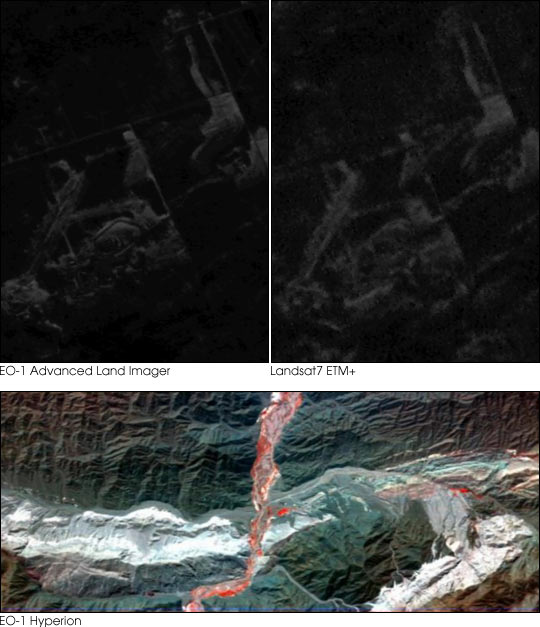


Scientists have seen the first images from NASA’ s Earth Observing-1 (EO-1) spacecraft, now flying in formation with the Landsat 7 satellite, and are excited with the performance of the instruments.
Scenes of Alaska taken by EO-1’ s Advanced Land Imager (ALI) in the panchromatic (PAN) band are of considerably better quality than the PAN band image taken by Landsat 7 under nearly identical lighting and surface conditions almost one year earlier to the day (November 24, 2000), said EO-1 Mission Scientist Dr. Stephen Ungar.
“The EO-1 PAN band has a higher spatial resolution (10-meter pixel size as opposed to 15-meter for Landsat 7) and a better “signal-to-noise” ratio enabling it to reliably make more sensitive measurements,” said Ungar. “EO-1’ s PAN band is located in a region of the light spectrum which allows for better discrimination on the ground than available with the Landsat 7 PAN band,” he added.
The Hyperion instrument onboard EO-1 also has taken its first images, and scientists are delighted with the results. An image taken in South America in a mountainous region of Argentina shows area of new spring growth.
The Hyperion instrument is able to see the Earth more “completely” and has a higher spectral resolution than previous instruments. The uses for an instrument than can make such fine distinctions include studies of land use, changes in land cover, mineral resource assessment, research into coastal processes, changes in the atmosphere and more.
Images courtesy EO-1 science team